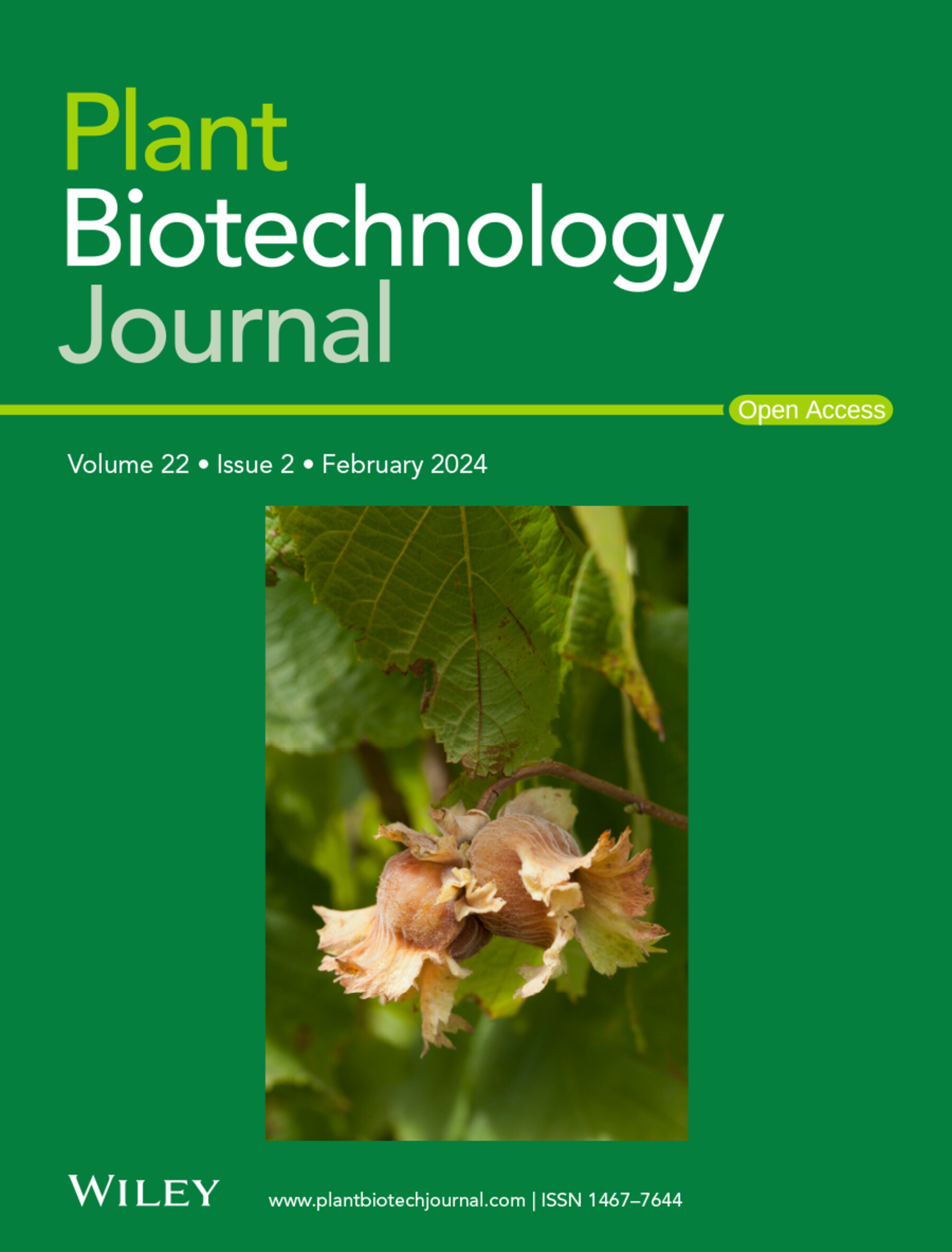AtNPR1转基因柑橘耐绿病品系的风险评价及分子特性研究
IF 10.5
1区 生物学
Q1 BIOTECHNOLOGY & APPLIED MICROBIOLOGY
引用次数: 0
摘要
柑橘黄龙病(HLB)对佛罗里达州的柑橘生产造成了毁灭性的损失,自2005年以来产量下降了90%以上。尽管作出了广泛的努力,但没有一种可持续的解决办法广泛有效。本研究通过转基因“Hamlin”甜橙系来表达拟南芥NPR1 (AtNPR1)基因,评估其健康和环境风险。AtNPR1基因是系统性获得性抗性的关键调控因子。这些柑橘品系表现出很强的HLB耐受性,疾病症状减轻,果实产量持续,没有明显的阴性表型异常。综合风险评估显示最小的暴露、健康或环境风险。AtNPR1蛋白:(1)在水果中几乎检测不到,(2)在模拟胃肠道液体中迅速降解,(3)与已知的过敏原或毒素不相似。全基因组测序鉴定出T-DNA插入位点在1号或6号染色体上为杂合,在已知的果实产生基因中没有中断。开发了PCR标记用于快速鉴定品系。所选品系目前正在高HLB压力下进行小型田间试验,并继续表现出低视觉HLB症状和积极的园艺性状。这些发现支持了监管部门批准这些转基因柑橘品种的初步要求,为柑橘可持续生产提供了一个有希望的策略。本文章由计算机程序翻译,如有差异,请以英文原文为准。
Risk Evaluation and Molecular Characterisation of AtNPR1 Transgenic Citrus Lines Tolerant to Citrus Greening Disease.
Citrus greening disease, or Huanglongbing (HLB), has caused devastating losses to citrus production in Florida, with yields declining by over 90% since 2005. Despite extensive efforts, no sustainable solution has been widely effective. Here, transgenic 'Hamlin' sweet orange lines engineered to constitutively express the Arabidopsis NPR1 (AtNPR1) gene, a key regulator of systemic acquired resistance, are evaluated for health and environmental risks. These citrus lines exhibit strong HLB tolerance, with reduced disease symptoms, sustained fruit production, and no apparent negative phenotypic abnormalities. Comprehensive risk assessment reveals minimal exposure, health, or environmental risk. The AtNPR1 protein is: (1) barely detectable in fruit, (2) rapidly degraded in simulated gastrointestinal fluids, and (3) not similar to known allergens or toxins. Whole-genome sequencing identified the T-DNA insertion sites as heterozygous in either chromosome 1 or 6, with no disruptions in known fruit-producing genes. PCR markers were developed for rapid line identification. The selected lines are currently in a small field trial under high HLB pressure and continue to exhibit low visual HLB symptoms and positive horticultural traits. These findings support the initial requirements for regulatory approval of these transgenic citrus varieties, offering a promising strategy for sustainable citrus production.
求助全文
通过发布文献求助,成功后即可免费获取论文全文。
去求助
来源期刊

Plant Biotechnology Journal
生物-生物工程与应用微生物
CiteScore
20.50
自引率
2.90%
发文量
201
审稿时长
1 months
期刊介绍:
Plant Biotechnology Journal aspires to publish original research and insightful reviews of high impact, authored by prominent researchers in applied plant science. The journal places a special emphasis on molecular plant sciences and their practical applications through plant biotechnology. Our goal is to establish a platform for showcasing significant advances in the field, encompassing curiosity-driven studies with potential applications, strategic research in plant biotechnology, scientific analysis of crucial issues for the beneficial utilization of plant sciences, and assessments of the performance of plant biotechnology products in practical applications.
 求助内容:
求助内容: 应助结果提醒方式:
应助结果提醒方式:


